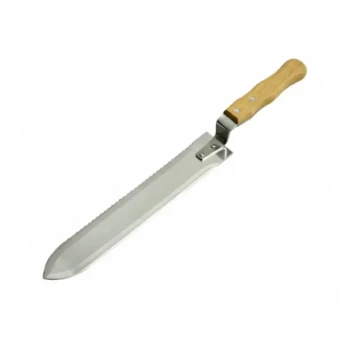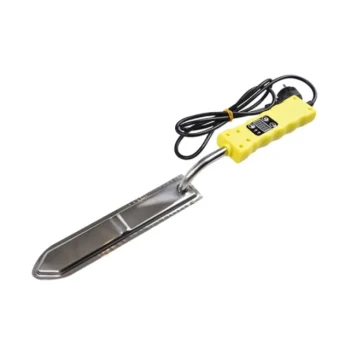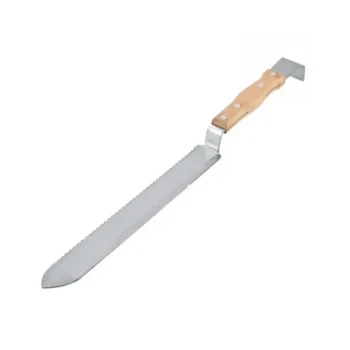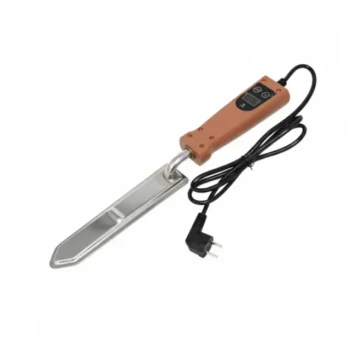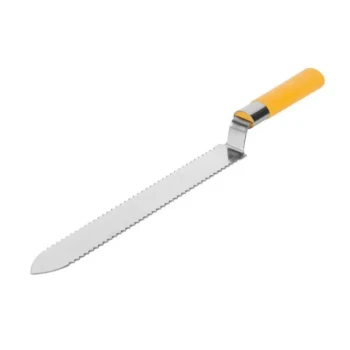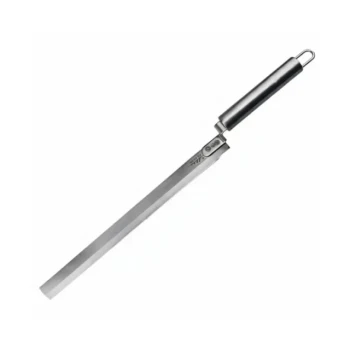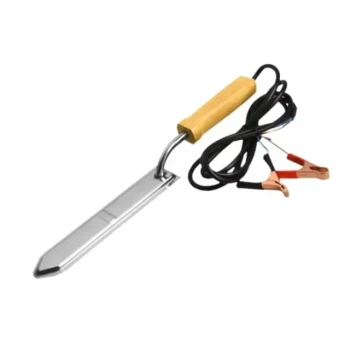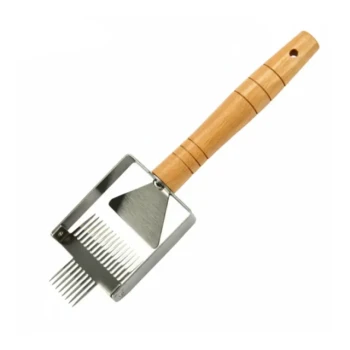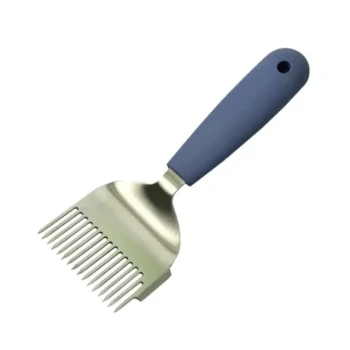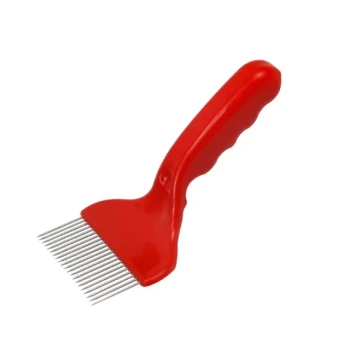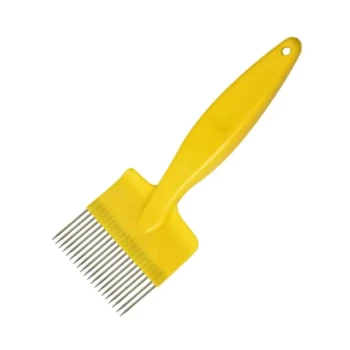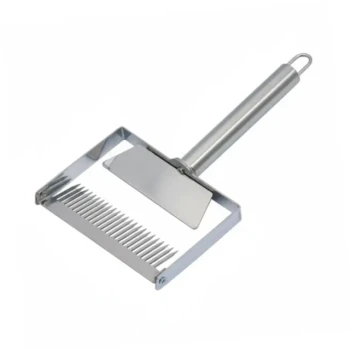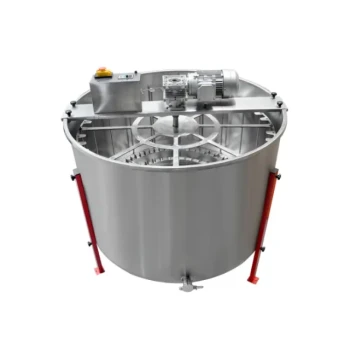To remove wax cappings from honeycomb, beekeepers use a cappings scratcher (a fork-like tool), a cold serrated knife, or a heated knife. Heated knives, which can be warmed with water or steam, are most commonly electric, offering the greatest efficiency for cleanly slicing through the wax.
The best uncapping tool is not a single item, but rather the one that best matches the scale of your operation. The choice is fundamentally between low-cost manual methods suitable for a few hives and higher-efficiency heated tools designed to save significant time and effort.
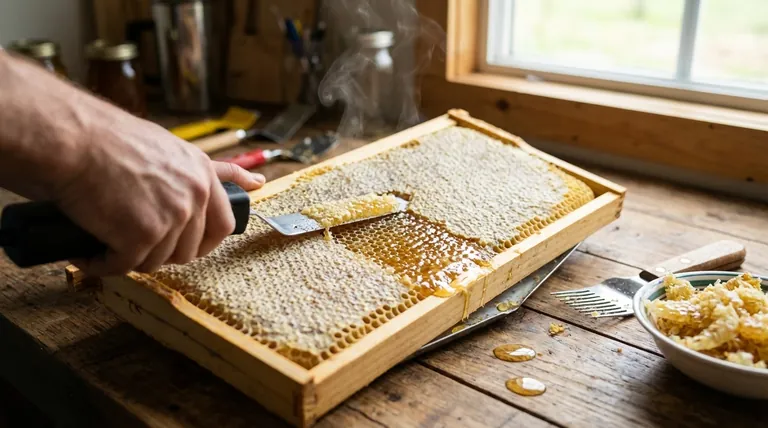
The Uncapping Toolkit: A Detailed Look
The goal of uncapping is to expose the honey-filled cells with minimal damage to the underlying wax comb. The bees will repair this comb later, and the less damage you do, the less energy they must expend on repairs.
The Cappings Scratcher (or Fork)
A cappings scratcher is a simple, fork-like tool with sharp, stainless steel tines. It is used to pierce and pull off the wax cappings.
This tool is highly precise, making it excellent for reaching low spots or recessed areas of the comb that a knife might miss. However, using a scratcher for an entire frame is very slow and laborious.
Most beekeepers keep a scratcher on hand to clean up the edges and missed patches after using a knife.
The Cold Serrated Knife
A long, serrated knife, much like a bread knife, is a common entry-level uncapping tool. It's inexpensive and readily available.
To use it, you rest the knife on the frame's top and bottom bars and use a quick, sawing motion to slice off the cappings. Using a cold knife can be messy and may tear the comb if the motion is not fast and smooth.
Introducing Heat: The Efficiency Multiplier
Applying heat is the single biggest upgrade you can make to the uncapping process. A hot blade melts the wax as it cuts, resulting in a significantly faster, cleaner, and smoother slice with far less effort.
Heated Knives: The Standard for Most Beekeepers
Heated knives come in several forms, but all operate on the same principle: a hot blade makes the job effortless.
The most common and convenient option today is the electric uncapping knife. It contains an internal heating element, often with a thermostat, that keeps the blade at a consistent, optimal temperature. It slices through cappings like a hot knife through butter, dramatically speeding up the workflow.
Older methods involved two knives, with one sitting in a pan of hot water while the other was in use. This works but is less convenient than a self-heating electric model.
Understanding the Trade-offs
Choosing a tool involves balancing speed, cost, and the quality of the final result—both for your honey and for the comb you return to the bees.
Speed vs. Cost
A cappings scratcher is the cheapest tool but by far the slowest. It is best suited for beekeepers with only one or two hives or for touch-up work.
An electric knife represents the highest initial cost but provides a massive return in time saved. If you have more than a few hives to process, the investment is almost always worthwhile.
Comb Preservation
A cold, serrated knife, if used improperly, can rip and tear the comb. This creates more repair work for the bees, who must expend nectar and energy to fix the cells before they can refill them.
A heated knife provides the cleanest cut. By melting a fine line as it passes, it leaves behind a smooth surface that the bees can easily clean up and reuse, saving colony resources.
Selecting the Right Tool for Your Apiary
Your choice depends entirely on the size of your apiary and how much you value your time during the honey harvest.
- If your primary focus is keeping costs at an absolute minimum with 1-2 hives: Start with a dedicated serrated knife and a cappings scratcher for cleanup.
- If your primary focus is efficiency for 3+ hives: An electric uncapping knife is the clear choice and the single best investment you can make to streamline your harvest.
- If your primary focus is preserving comb integrity: A heated knife provides the cleanest cut, reducing the repair work your bees need to do.
Ultimately, the right tool is the one that makes your honey harvest a rewarding experience rather than a laborious chore.
Summary Table:
| Tool | Best For | Key Advantage | Key Consideration |
|---|---|---|---|
| Cappings Scratcher | 1-2 hives, precise cleanup | Low cost, high precision | Very slow for full frames |
| Cold Serrated Knife | Entry-level, minimal budget | Inexpensive and readily available | Can tear comb; requires skill |
| Electric Heated Knife | 3+ hives, efficiency | Fast, clean cut, preserves comb | Higher initial investment |
Streamline your honey harvest with professional-grade equipment from HONESTBEE.
For commercial apiaries and beekeeping equipment distributors, efficiency and comb integrity are paramount to profitability. Our wholesale-focused operations supply durable, high-performance uncapping tools—including industrial electric knives—designed to save you significant time and labor during large-scale harvests.
Contact HONESTBEE today to discuss your equipment needs and get a wholesale quote. Let us help you equip your operation for maximum efficiency and honey yield.
Visual Guide
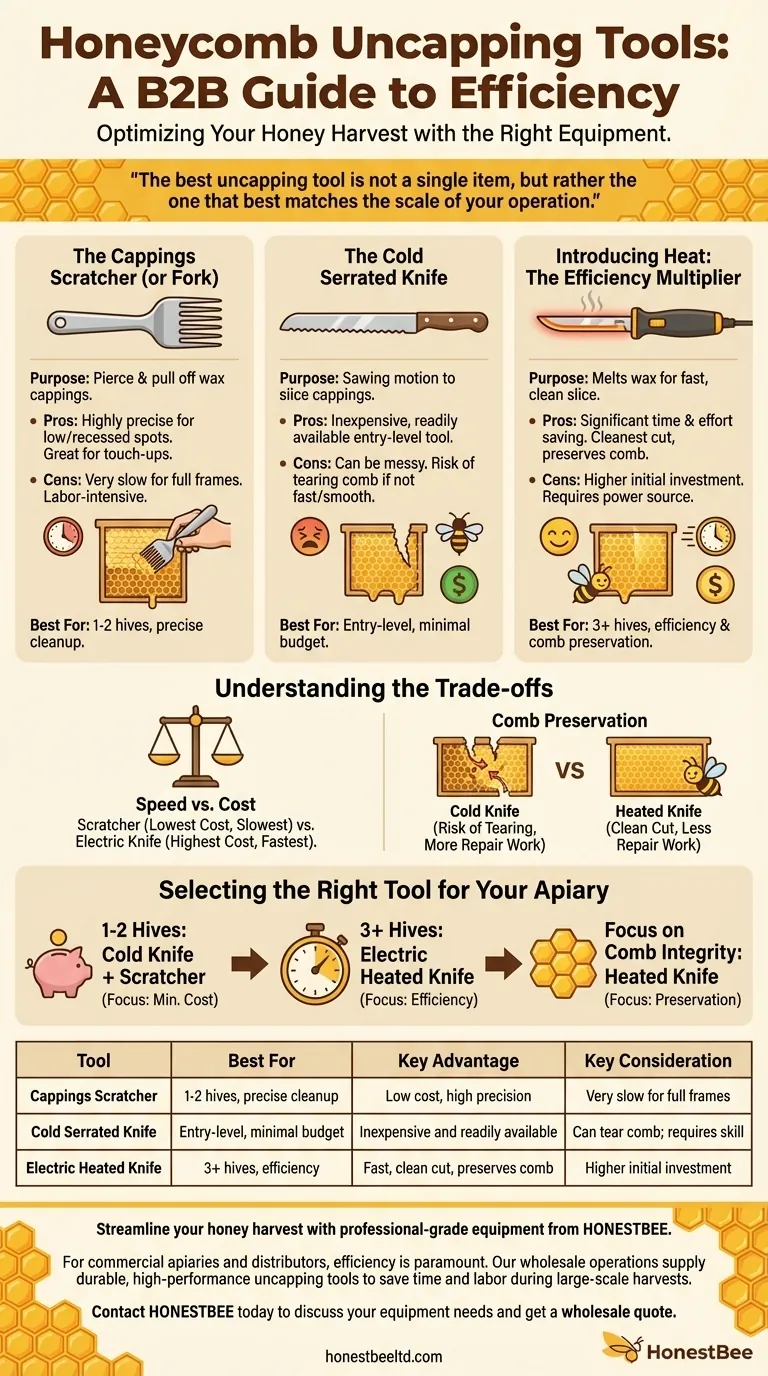
Related Products
- Honeycomb Uncapping Knife for Apiculture
- Professional Electric Honey Uncapping Knife with Heated Digital Temperature Control for Beekeeping
- Professional Z-Shaped Multi-Function Uncapping Knife for Beekeeping
- Digital Display Electric Honey Uncapping Knife for Beekeeping and Decapping
- Electric Heated Honey Uncapping Knife for Beekeeping
People Also Ask
- How to clean an uncapping knife? Master the Hot-Knife Method for Easy Maintenance
- What is the overall recommendation for beginner beekeepers regarding uncapping tools? Master Your First Honey Harvest
- What is the use of a bee knife? Essential for Efficient Honey Harvesting
- What is an uncapping knife used for? A Guide to Efficient Honey Harvesting
- What is the use of an uncapping knife? Master the First Step of Honey Harvesting
